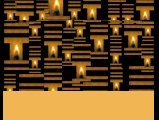 |
 |
 |
| 1st Part |
| |
| 1. Franz Liszt (1811-1886) " From Années de Pèlerinage (Deuxième Année)" : |
| |
 Sposalizio (The Marriage of the Virgin) Sposalizio (The Marriage of the Virgin) |
| |
|
Franz Liszt wrote a composition for solo piano based on Raphael's painting with the title "Sposalizio" in his Années de Pèlerinage (Deuxième année: Italie). |
| |
|
| |
|
| 2. Eun Hwa Cho (1973) |
| |
 Et in Arcadia Ego Et in Arcadia Ego |
| |
|
Based on Nicolas Poussin's painting: "Et in Arcadia Ego" |
| |
|
| |
| 3. Enrique Granados (1867-1916) From “Goyescas”: |
| |
|
The story of Goyescas is based on a series of six paintings from Francisco Goya’s early career, inspired by the stereotypical young men and women of the majismo movement. "Majos” and "Majas" are known for their bohemian attitude and spirited nature. |
| |
|
| |
 Los requiebros (Flattery) Los requiebros (Flattery) |
| |
|
Los requiebros (Flattery) was inspired by the fifth of Goya's Caprichos, Tal para cual (Two of a Kind). |
| |
|
| |
 Quejas o la Maja y el Ruiseñor Quejas o la Maja y el Ruiseñor
 (Laments or the Maiden and the Nightingale) (Laments or the Maiden and the Nightingale) |
| |
|
The fourth piece of the Goyescas, is the only one in the set with a key signature.
It is a fanciful dialogue between a heartsick maja and a nightingale, which sings a virtuosic cadenza ad libitum at the end of the movement. |
| |
|
| |
 El amor y la muerte (Love and Death) El amor y la muerte (Love and Death) |
| |
|
El amor y la muerte (Love and Death) was inspired by another of Goya's Caprichos, of the same title. The etching depicts a young woman holding in her arms her dying lover, a look of terror and dismay on her face as he breathes his last. |
| |
|
| |
 El Pelele (The Straw Man) El Pelele (The Straw Man) |
| |
|
Granados composed other Goyescas, which, though they do not appear in the set of pieces so entitled, nonetheless owe their inspiration to the same source. Prominent among these is El pelele (The Straw Man). Goya portrayed the scene unforgettably in one of his tapestry cartoons. |
 |
 |
 |
| 2nd Part |
| |
| 4. Sergei Rachmaninov (1873 – 1943) |
| |
 Prelude Op. 32, No. 10 in B minor Prelude Op. 32, No. 10 in B minor |
| |
|
Inspired by Arnold Böcklin’s painting: Die Heimkehr (The Homecoming or The Return) |
| |
|
| |
|
| 5. Claude Debussy (1862-1918) |
| |
 L’Isle Joyeuse L’Isle Joyeuse |
| |
|
Inspired by Antoine Watteau’s painting: L’embarquement pour Cythère. Debussy was a great admirer of Antoine Watteau (1684-1721) and found inspiration through his art. |
| |
| |
| 6. Modest Mussorgsky (1839 - 1881) |
| |
 Pictures at an Exhibition Pictures at an Exhibition |
| |
|
In 1874 Modest Mussorgsky composed his famous Pictures at an Exhibition, based on ten drawings and watercolors produced by his recently deceased friend, the architect and artist Victor Hartmann (1834 – 1873). Most of the works that inspired the composer are lost, either yet undiscovered or, sadly, destroyed by time and neglect. |
| |
|
|
| |
|
| |
- |
Promenade |
| |
- No. 1 |
Gnomus (The Gnome) |
| |
- |
Interlude, Promenade theme |
| |
- No. 2 |
Il vecchio castello (The Old Castle) |
| |
- |
Interlude, Promenade theme |
| |
- No. 3 |
Tuileries (Dispute between Children at Play) |
| |
- No. 4 |
Bydlo (Cattle) |
| |
- |
Interlude, Promenade theme |
| |
- No. 5 |
Ballet of the Unhatched Chicks |
| |
- No. 6 |
Samuel Goldenberg and Schmulÿe |
| |
- |
Promenade |
| |
- No. 7 |
The Market at Limoges (The Great News) |
| |
- No. 8 |
The Catacombs (Roman sepulcher) and
With the Dead in a Dead Language |
 |
- No. 9 |
Baba-Yagá (The Hut on Fowl's Legs) |
| |
- No. 10 |
The Bogatyr Gates (in Kiev) |
|
 |
 |
 |
 |
| |
| 1. 李斯特 (1811 - 1886) 選自「巡禮之年 (第二年)」: |
| |
 「少女的婚禮 」 「少女的婚禮 」 |
| |
|
李斯特根據拉斐爾(Raphael)的畫作《少女的婚禮》而編寫的鋼琴獨奏曲,是《巡禮之年》(第二年:意大利)的其中一首樂曲。 |
| |
|
| |
|
| 2. Eun Hwa Cho (1973) |
| |
 「阿爾卡迪的牧人」 「阿爾卡迪的牧人」 |
| |
|
基於尼古拉·普桑的繪畫"阿爾卡迪的牧人" |
| |
|
| |
| 3. 格拉納多斯(1867 - 1916) 選自「哥雅畫集」 |
| |
|
哥雅的故事是基於弗朗西斯科戈雅的早期職業生涯中,六畫幅系列典型年輕男性和女性“浪蕩風”的啟發。 波西米亞“浪蕩男”及“浪蕩女”的態度和精神的性質是眾所周知的。 |
| |
|
| |
 情話 情話 |
| |
|
創作《情話》的靈感,源自哥雅蝕刻連作「狂想曲」中第五幅名為《一體兩面》(Tal para cual)的作品。 |
| |
|
| |
 嘆息、少女與夜鶯 嘆息、少女與夜鶯 |
| |
|
「哥雅畫集」中的第四首樂曲,是組曲中唯一帶調號的作品。樂曲描述悲痛少女與夜鶯之間的虛幻對話,樂章末尾以隨意的華彩樂段為終結。 |
| |
|
| |
 愛與死 愛與死 |
| |
|
《愛與死》取材自哥雅「狂想曲」的另一幅同名蝕刻畫, 畫作描繪年輕的婦人,手抱垂死的愛人,在他呼出最後一口氣時,一面驚恐與難過的神情。 |
| |
|
| |
 稻草人 稻草人 |
| |
|
格拉納多斯亦譜寫了其他「哥雅畫集」樂曲,雖然這些樂曲未有收納在以此為題的組曲內,但它們的靈感同出一源,當中最著名的是《稻草人》,哥雅把有關場景描繪在其中一幅織錦畫中,令人難忘。 |


